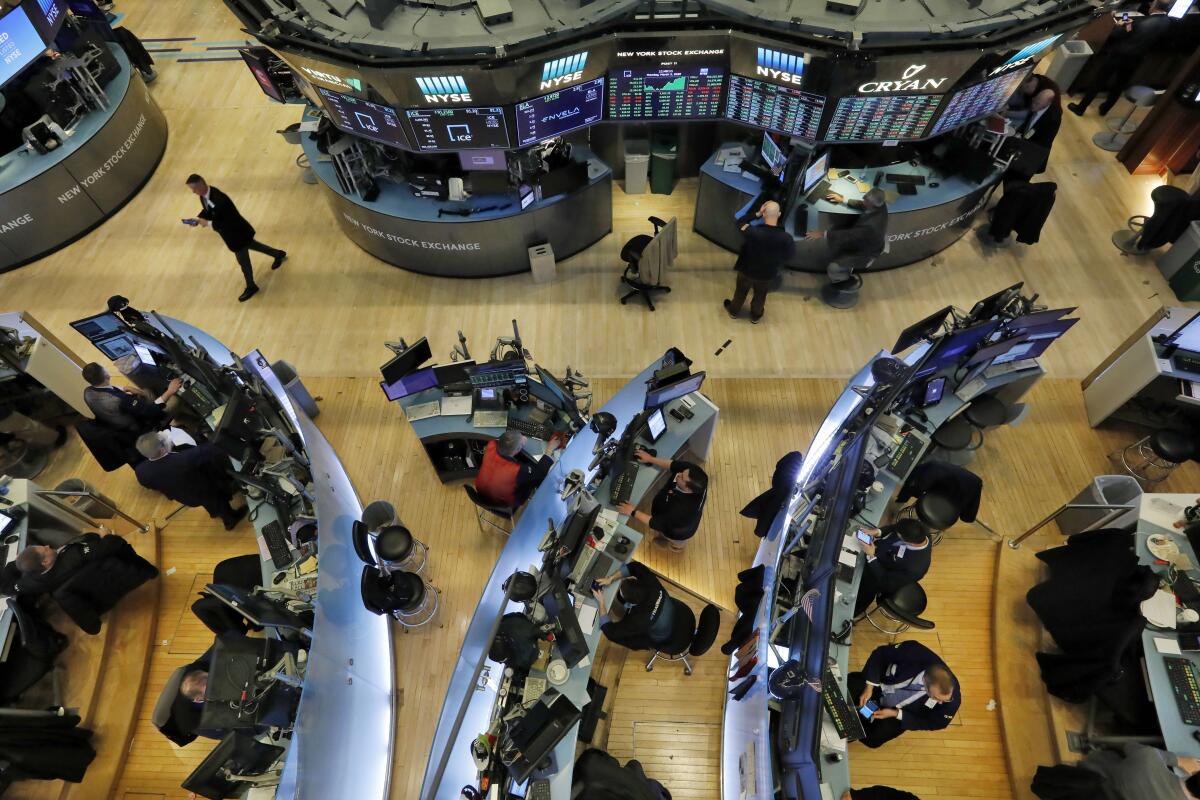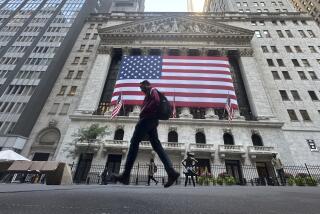Wall Street returns to highest level in more than a year after inflation cools

Wall Street returned to its highest level in more than a year on Wednesday after a report showed inflation cooled a bit more than expected last month, which hopefully takes some more pressure off the economy.
The Standard & Poor’s 500 rose 32.90 points, or 0.7%, to 4,472.16 to reach its strongest closing level since April 2022. The Dow Jones industrial average advanced 86.01 points, or 0.3%, to 34,347.43, and the Nasdaq composite gained 158.26 points, or 1.2%, to close at 13,918.96.
Most stocks rose on Wall Street, from flashy Big Tech behemoths to banks to staid utility companies, though the gains faded a bit as the day progressed.
The U.S. government’s latest update on inflation showed that consumers paid prices for gasoline, food and other items that were 3% higher overall in June than a year earlier. That’s down from 4% inflation in May and a bit more than 9% last summer. Perhaps more important, it was a touch lower than economists expected.
High inflation has been at the center of Wall Street’s problems because it’s driven the Federal Reserve to jack up interest rates at a blistering pace. Higher rates undercut inflation by slowing the entire economy and hurting investment prices, and they’ve already caused damage to the banking, manufacturing and other industries.
The inflation figure the government reported Wednesday was down sharply from a 4% annual rate in May, though still above the Fed’s 2% target rate.
Traders remain nearly convinced the Fed will raise the federal funds rate at its meeting in two weeks to a range of 5.25% to 5.50%, which would be its highest level since 2001. But expectations are also climbing for that to be the final increase for rates from their starting point of virtually zero early last year.
“They’ll probably still pull the trigger on a hike, but it will be based on symbolism more than substance,” said Brian Jacobsen, chief economist at Annex Wealth Management. He pointed to another report earlier this month that showed a slowdown in U.S. job growth, which could also take some pressure off inflation.
Treasury yields tumbled in the bond market after the cooler inflation data pushed traders to trim bets for Fed action later this year.
The 10-year Treasury yield fell to 3.86% from 3.98% late Tuesday. It helps set rates for mortgages and other important loans.
The two-year Treasury yield dropped to 4.73% from 4.89%. It tends to follow expectations for the Fed more closely.
To be sure, even if the Fed does halt its hikes, analysts warn the economy and financial markets still haven’t seen the full effect of all the past increases. Rate hikes take a notoriously long time to filter through the system, and unanticipated pain can occur.
That’s what happened in March, when high rates helped cause the failure of three U.S. banks and rattled faith in the system.
“Despite today’s deceleration, we continue to expect inflation to remain above the Federal Reserve’s 2% target, making it unlikely that we see policy easing soon,” said Gargi Chaudhuri, head of iShares Investment Strategy, Americas.
That means she expects rates to stay high a while. That’s also why many investors say the waiting game is still on to see if a long-predicted recession will actually happen.
A resilient job market has helped to keep the economy out of a recession, though it’s also under pressure from higher rates. The latest “Beige Book” report from the Federal Reserve on Wednesday said that overall economic activity has increased slightly since late May. It also said several Fed districts have noticed some slowing in inflation.
In the meantime, though, stocks that tend to benefit the most from lower interest rates are leading the way. That includes big technology and other high-growth stocks.
Nvidia was the strongest force pushing up the S&P 500 after it jumped 3.5%. Microsoft was close behind with a gain of 1.4%.
Banks also rose on hopes for a halt to rate hikes. Earlier rate increases strained their business by knocking down the value of loans and bonds bought when rates were ultra low. After the collapses of three banks in March, bank stocks tumbled as Wall Street hunted for the industry’s next potential weak link.
KeyCorp. rose 3.1%, Comerica gained 3.1% and Zions Bancorp. added 2.8%.
Domino’s Pizza jumped 11.1% for the biggest gain in the index after it announced a partnership where customers can order its pies through Uber Eats.
In Europe, the Bank of England warned Wednesday that households are facing increasing problems from sharply rising interest rates but expressed hope that the country’s biggest banks were resilient enough to offer more help than they could before the global financial crisis 15 years ago.
Stocks rose 1.8% in London and were also higher across much of the rest of Europe.
In Asia, stocks were mixed. Japan’s Nikkei 225 dropped 0.8% after North Korea launched a long-range ballistic missile toward its eastern waters Wednesday, two days after the North threatened “shocking” consequences to protest what it called provocative U.S. reconnaissance activity near its territory.
Hong Kong’s Hang Seng index rose 1.1%, South Korea’s Kospi added 0.5% and stocks in Shanghai fell 0.8%.
AP writers Elaine Kurtenbach and Matt Ott contributed to this report.
More to Read
Inside the business of entertainment
The Wide Shot brings you news, analysis and insights on everything from streaming wars to production — and what it all means for the future.
You may occasionally receive promotional content from the Los Angeles Times.











